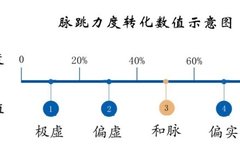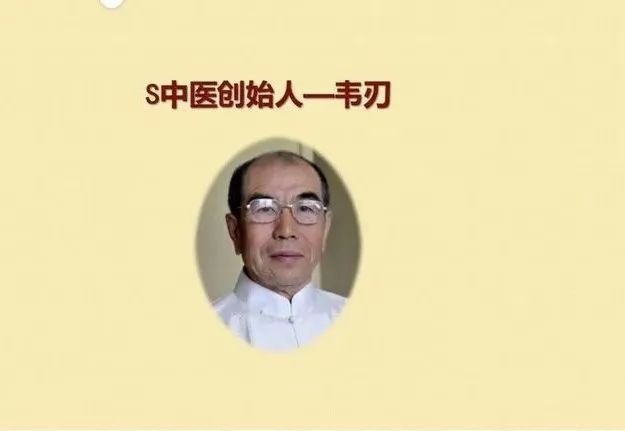
To understand the Xu Sun pulse, let us first review the steps of pulse diagnosis:
1. Differentiating Xu (deficiency) and Shi (excess) — This refers to assessing the strength of the pulse.
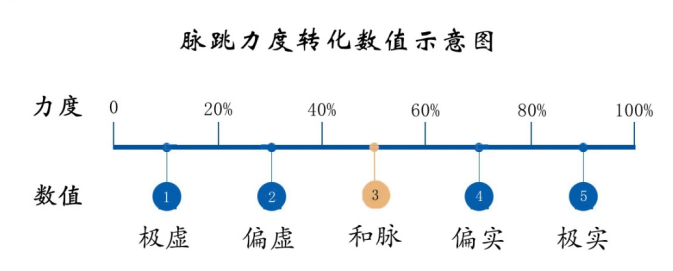
He pulse: Soft and strong;
Xu pulse: Weak pulse;
Shi pulse: Strong pulse that pushes against the fingers.
2. Differentiating Han (cold) and Re (heat) — This refers to assessing the temperature of the pulse.
Heat sign: The pulse feels warm to the touch;
Cold sign: The pulse feels cool to the touch.
Method for assessing finger temperature: Place your fingers on the forehead, eyelids, and earlobes, and calmly feel the temperature. Normally, the temperature of the fingers should be very close to that of the upper eyelids.
3. Differentiating Shi pulse — This refers to assessing stagnation, stasis, water, dampness, and cold.


Xu Sun pulse

The so-called Xu Sun pulse indicates a poor self-recovery and regulatory ability. To refresh our memory, we will continue to review the content discussed by Master Wei in “S Traditional Chinese Medicine Enlightenment”.
First, the body’s stability control system, which refers to the structural composition and operational organization of the body’s self-regulatory system.
The structure of the body’s homeostasis system mainly consists of three components:
The first component is the Zang Xiang (Organ Manifestation), which in oscillating TCM does not refer to a specific organ, but rather the entire qi transformation ability of the body. This includes the excitation state, ascending state, descending state, etc., representing the entire circulation process of the body where Yin forms and Yang transforms into qi.
The traditional TCM view that the spleen governs transportation and transformation is actually incorrect; without the assistance of other organs, the spleen cannot perform its function. The transportation and transformation of the spleen and stomach require the warming of Heart Yang, the assistance of the liver in raising clear qi, the lung’s help in dispersing, and the kidney’s energy to provide support. All five organs must work together to facilitate qi transformation and movement, ultimately functioning as a whole. Therefore, the advantage of oscillating TCM is viewing these as a unified system, while the traditional TCM view of organs and Zang Xiang theory incorrectly separates the five organs, particularly in dialectical analysis, which can confuse practitioners.
Thus, the first component of the oscillating TCM’s stability control system is the body’s ability to transform Yin into qi.
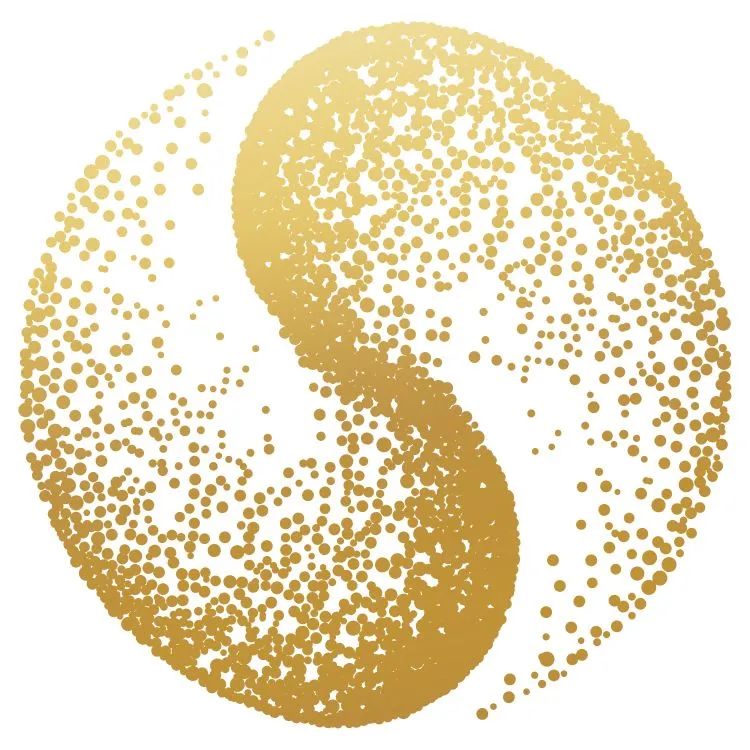
Second component is the body’s meridian system.
The meridians serve as the channels for the transmission of material, information, and energy within the stability system. The corresponding fascia of the meridians is distributed throughout the body, which is a testament from Master Wei, and we will use this as a basis.
Third component consists of two parts:
The first is the heart, which in ancient texts is referred to as the monarch of the body, representing human thought, emotions, and mental states. It influences the overall trend of the stability system. For example, emotional states such as overthinking harm the spleen, and anger harms the liver, which can lead to fluctuations in the body’s stability system.
Master Wei stated that when the body’s stability system is in a relatively weak state, the heart’s control system is often not conducive to recovery. Especially in modern times, people’s minds are often not calm, leading to impatience or introversion, which disrupts the stability system and hinders treatment and recovery.
The second control system is the body’s foundation — Ming Men (Gate of Life) and the meridians.
This Ming Men does not refer to the Ming Men acupoint, but rather the lower jiao (lower abdomen). The Ming Men and meridians work together to coordinate the body’s stability system, such as transmitting information, transporting qi and fluids, regulating qi mechanisms, and distributing qi and fluids. If the body experiences fluctuations, a strong Ming Men control system can autonomously restore the body from pathological to normal states. The Ming Men control system is generally not something individuals can consciously control; it passively helps the body return to normal, as it has this function. For instance, one cannot consciously regulate heartbeats or the peristalsis of the large intestine; these are controlled by the coordination of the Ming Men and meridians.
Therefore, there are two key points in treating diseases: the Ming Men-meridian control system is crucial, with the Ming Men located in the lower jiao, serving as the foundation of the body. Some stagnant pulses, chaotic pulses cannot be corrected with medication; in such cases, needling the Qi Hai (Sea of Qi) acupoint can replenish energy in the lower jiao, enabling control and restoring chaotic pulses to normal. When the pulse is chaotic and the disease pulse is unclear, needling the Qi Hai acupoint can regulate the pulse effectively. The pulse pattern will change, transforming chaotic pulses into an orderly state.
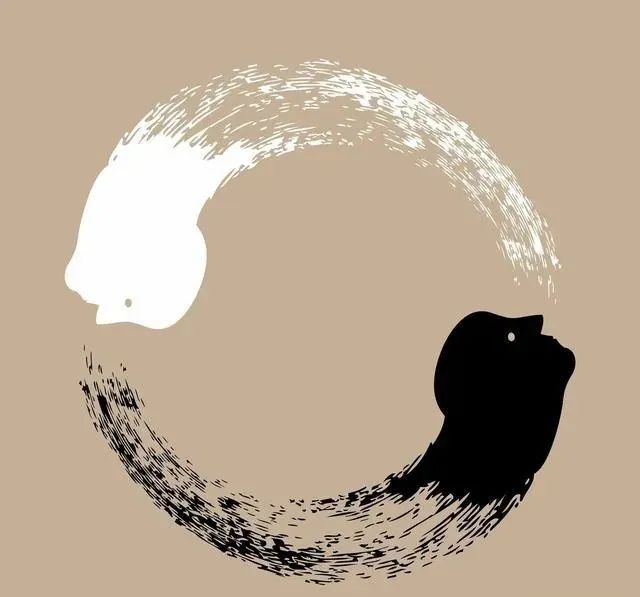
Definition of Xu Sun pulse
It cannot stabilize normal qi and fluids, resulting in an unsteady pulse, such as stagnant pulse and disease pulse.
Special attention should be given to the Chi pulse.
The reason why acupuncture or medication can be effective is due to the function of the Ming Men-meridian control system.
The first type of damage
Initially, due to deficiency, the ascending control system is not strong, lacking the ability to normalize the body’s incorrect fluctuations. When energy is weak and deficient, it leads to imbalances, making the body susceptible to disturbances. For instance, in a state of deficiency, the body is easily affected by external fluctuations, and if the Ming Men control system is also weak, it cannot manage the pulse.
The second type occurs when the Ming Men control system’s ability to normalize is weak; for example, when someone experiences emotional fluctuations, such as sadness, the body collapses, which is often due to Yin deficiency leading to stagnation.
All diseases begin and end with stagnation, originating from deficiency; this principle is fundamental. It stems from the body’s ability to normalize and control, particularly the ascending normalizing ability. It lacks the authority to restore balance. If the pulse cannot be normalized, it will become unsteady, leading to stagnation, where energy accumulates excessively in certain areas, sometimes forming stasis. Excessive accumulation of qi and fluids in certain areas can lead to phlegm and dampness, resulting in a state of stasis. From deficiency to stagnation, and from stagnation to stasis.
The pulse pathway, or meridian, when deprived of qi and fluids, will suffer damage, causing the pulse pathway to become thin. Due to stagnation, some areas may not receive qi and fluids, leading to blockage. The initial deficiency, combined with stagnation, gradually results in damage to certain meridians, causing the pulse pathway to thin. This is the damage to the meridians.
Thus, deficiency primarily damages the body’s qi transformation ability, weakening the overall organ function, leading to weakness.

The second type is damage to the meridian pulse pathway.
Damage to the meridians will obstruct the transmission of information and the transport of qi and fluids, leading to blockages. Master Wei employs a supportive formula, such as using Dang Shen (Codonopsis), Shu Di Huang (Rehmannia), and Gou Qi Zi (Goji Berries) to support the body. This formula is relatively neutral, neither cold nor hot, and can replenish qi and fluids. Once qi and fluids are restored, the body will gradually recover. This is how to address the Xu Sun pulse.
After damage to the meridians, qi and fluids cannot reach, causing the pulse pathway to thin. It becomes stagnant and the pulse is thin.
The third type is the deep Xu or Chi Xu.
Master Wei believes that the structure of the meridians is tangible, consisting of the body’s fascia layers. When this structure is damaged, such as with deep stagnation, the meridian pathways can become layered with stasis, similar to scars formed after bodily injuries. Structural damage is difficult to recover from. This type of Xu Sun pulse is characterized by deep stasis and heavy stasis, often attached to the bones. The second type of Xu Sun pulse is a very thin pulse. The body is based on the Chi pulse, which is often deficient; thus, the Chi pulse is generally thin.
Summary of the characteristics of Xu Sun pulse:
First, both Xu heat and Xu cold exist, with both Yin and Yang being deficient.
Second, there is deep stasis, heavy stasis, a deficient pulse, and a thin pulse pathway.
Therefore, Xu Sun pulse can be stratified, with varying degrees of severity. Severe cases are difficult to recover from; cancer is similar in that it begins with deficiency, then stagnation, and when stagnation reaches a certain level, cancer cells isolate themselves from the surrounding body, making recovery challenging.
The overall characteristics of Xu Sun pulse are both deficient and stagnant, sometimes with abnormal Yin and Yang functions, which are the three main characteristics.
Clinically, I often use supportive formulas such as Dang Shen, Gou Qi Zi, and Shu Di Huang. Many individuals with various chaotic symptoms of Xu Sun pulse have responded positively to this treatment. The proportions of the supportive formula can be adjusted as needed.
When treating Xu Sun pulse, it is crucial to avoid excessive heat or cold. When replenishing deficiency, focus on the Ming Men and meridians. Once energy is directed to the lower jiao, the stability control ability will improve, and the body’s functions will normalize. Particularly, excessive cold or heat should be avoided; directly using drying or cold herbs for regulation is not advisable, as it equates to directly regulating cold or heat, which can lead to poor regulation. Therefore, it is better to focus on restoring the body’s regulatory ability — the Ming Men and meridian control system — allowing it to gradually adjust itself back to normal.
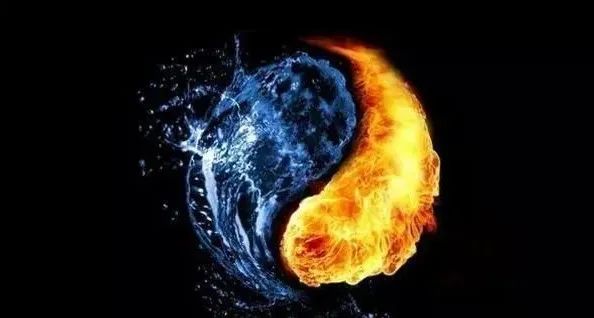
In general, for those who do not have Xu Sun pulse, addressing dampness and stasis while enhancing Yang will lead to improvement.
When it comes to Xu Sun pulse, intervention can sometimes be challenging; excessive cold or heat should be avoided. Therefore, when regulating Xu Sun pulse, it is essential to restore its self-regulatory ability, allowing it to normalize chaotic pulse patterns. The two key points for restoring self-regulatory ability are to use medications to replenish qi and fluids with supportive formulas — Dang Shen, Shu Di Huang, and Gou Qi Zi. For addressing stasis, a slight addition of stasis-resolving herbs may be considered. However, in clinical practice, many cases of Xu Sun pulse do not respond well to stasis-resolving herbs and instead require a stronger focus on supportive formulas. For stasis, external methods can be employed to help, such as unblocking the meridians, and finally using appropriate acupuncture techniques to stimulate the strength of the Chi pulse.
In summary, the goal is to activate the body’s stability control system. Replenish qi and fluids, regulate the Chi pulse, and unblock the meridians.
Excessive dryness or cold in treating Xu Sun pulse is not advisable.


